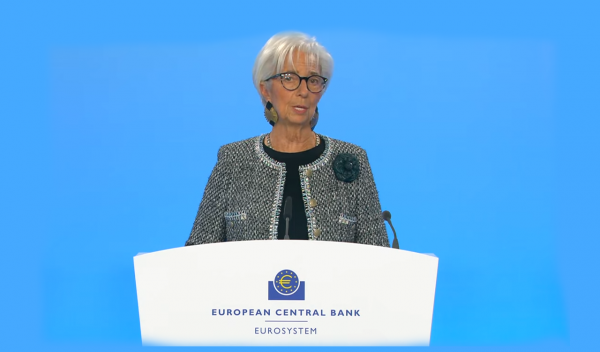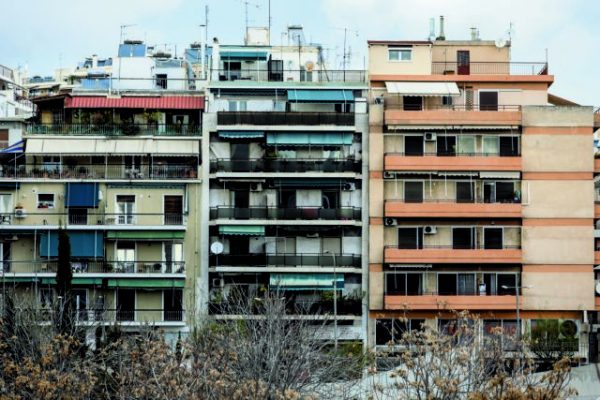
The Governor of the Bank of Greece, Giannis Stournaras, called on the administrations of the credit institutions to be on alert to deal with any new outbreak of red loans during his speech yesterday at the general meeting of shareholders of the monetary authority.
As he noted, on the one hand, the full impact of the pandemic on the economy has not been fully reflected, and on the other hand, the current energy crisis is putting pressure on the majority of borrowers.
According to the Bank of Greece, the negative impact of high inflation on the actual disposable income of households will limit the increase in consumer spending.
This fact, combined with the increased production costs due to the energy crisis, will negatively affect the profitability of companies.
Two trouble-spots
In the Governor’s report for 2021, the BoG refers to two major categories of loans, which could provide new non-performing loans (NPLs):
– In regulated exposures amounting to 15.3 billion euros
– In loans that come out of the state protection regime and return to regular installments
According to Mr. Stournaras, given the impact of the pandemic, it is estimated that “a significant percentage of the loans to which some kind of regulation has been applied, may be recorded as non-performing in 2022”.
He notes that even before the outbreak of the war, a high percentage of loans that were restructured, again showed a delay in a relatively short period of time after the conclusion of the most favorable repayment terms for the debtor.
At the same time, the central banker points out that part of the loans that are under support, e.g. through programs such as the “Bridge” [Gefyra], it is likely to be recorded as a NPL when the facilitation period has elapsed.
The indices are still high
The Bank of Greece also presents the performance of banks in terms of consolidation of their balance sheets.
According to the relevant provisional data, at the end of 2021 NPLs fell to the level of 18.4 billion euros and the index of arrears to 12.8% from 47.2 billion euros and 30.1% respectively a year earlier.
Despite the significant progress on the bad credit front, which was greater than the targets set by the banks, Mr. Stournaras in his report emphasizes the fact that the distance from the European average is still large (2.1% – September 2021 ).
In addition, he points out that most of the decline in red portfolios has come from securitizations and sales of exposures, which remain in the economy and not from the treatment of non-performing loans.
The issue was raised by banking executives on Thursday, speaking at the Delphi Economic Forum, who stressed that this makes it difficult for a large number of companies to access financing.
The problem is here
“The red loans left the banks but not the Greek economy. We can not lend to those who are “red” “underlined George Zanias, chairman of the board and non-executive advisor of Eurobank.
As he said, “the serviced loans are at 60% of GDP and should be doubled, without this being done indiscriminately, as the next crisis may come and we will end up with the memoranda again”.
For his part, George Hantzinikolaou, president of Piraeus Bank, noted that the problem of red loans remains.
As he said, non-performing loans may have come out of the bank balance sheets, but “they are in the economy, preventing these borrowers from returning to economic activity.”
According to him, several investment plans are rejected every day because companies have overdue debts to the banking system.
In this context, he stressed that the operation of the bankruptcy law can give them a real second chance, so that they can return to normalcy.
Latest News

DM Dendias: We talk With Turkey But We Always Bring Up Their Unacceptable Positions
Second and last day of closely watched conference, entitled 'Metapolitefsi 1974-2024: 50 Years of Greek Foreign Policy', also included appearances by PM Mitsotakis, Ex-PM Tsipras and PASOK leader Nikos Androulakis, among others

Rhodes Airport Tops Fraport Greece’s Regional Airports in 2024 Performance
According to Fraport's data, more than 35 million passengers (specifically 35.2 million) were handled by Fraport-managed airports during the 11 months.

European Central Bank Cuts Interest Rates by 25 Basis Points
It is the fourth cut of interest rates by Europe’s central bank, a move expected by the markets and financial analysts leading to the rate settling at 3%.

Airbnb: New Measures Add €600 in Extra Costs for Property Owners
Property managers face an immediate administrative fine of 5,000 euros if access to the inspected property is denied or any of the specified requirements are not met.

Economist: Greece Included in the Best Performing Economies in 2024
Meanwhile, Northern European countries disappoint, with sluggish performances from the United Kingdom and Germany.

EasyJet Expands Its Routes from Athens
The airline’s two new routes will be to London Luton and Alicante and they will commence in summer 2025.

Capital Link Forum Highlights Greece’s Economic Resurgence; Honors BoG Gov Stournaras
Capital Link Hellenic Leadership Award recipient, Bank of Greece Gov. Yannis Stournaras, an ex-FinMin, was lauded for his pivotal role during Greece’s economic recovery

Tourist Spending in Greece Up by 14%, Visa Card Analysis Shows
Greece’s capital Athens emerged as the most popular destination, recording a 17% increase in transactions with Visa cards, surpassing even the cosmopolitan island of Mykonos.

Inflation in Greece Unchanged at 2.4% in Nov. 2024
The general consumer price index (CPI) posted a 0.4% decrease in November compared to the previous month

2024 Christmas Holidays: Extended Shop Hours Schedule
The 2024 Christmas Holidays extended shop hours schedule commences on Thursday, December 12 and runs until the end of the year.


![Φυσικό αέριο: Δυναμικό come back του LNG στην Ελλάδα [γραφήματα]](https://www.ot.gr/wp-content/uploads/2023/01/OT_naturalgas-90x90.jpeg)












![Fraport: Πάνω από 35 εκατ. επιβάτες στα αεροδρόμια το 11μηνο – Πτώση στη Μύκονο [πίνακας]](https://www.ot.gr/wp-content/uploads/2022/06/fraport-90x90.jpg)

























 Αριθμός Πιστοποίησης Μ.Η.Τ.232433
Αριθμός Πιστοποίησης Μ.Η.Τ.232433